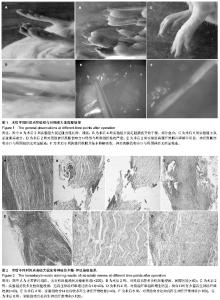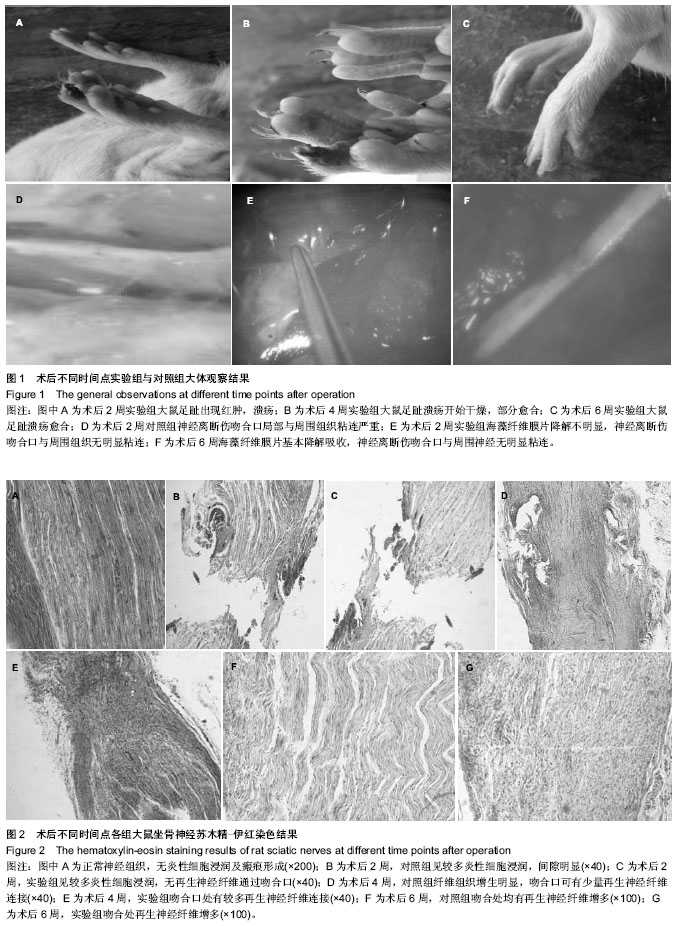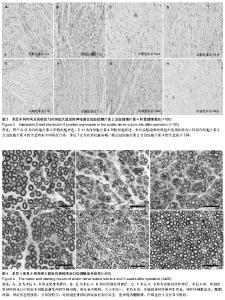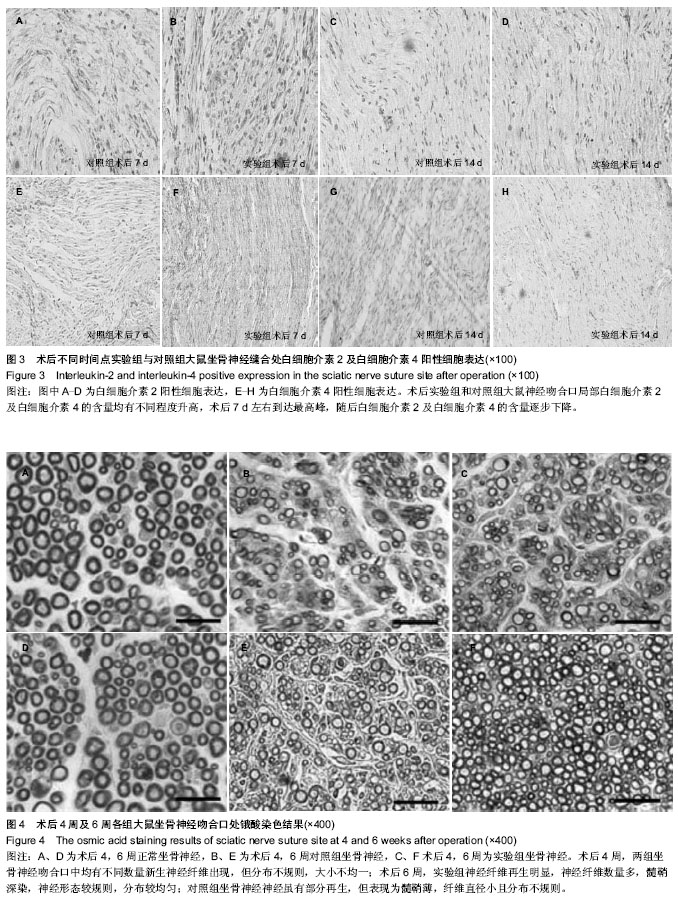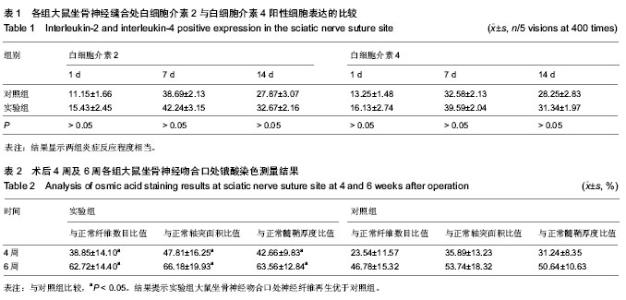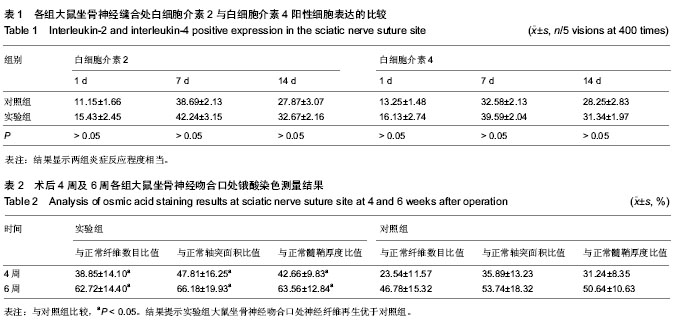| [1] 郑林丰,易西南.周围神经损伤的再生与修复的哲学启示[J].创伤外科杂志,2006,8(1):93-95.
[2] 顾立强,裴国献.周围神经损伤基础与临床[M].北京:人民军医出版社,2001:70-100.
[3] 杨宇民,顾晓松.组织工程神经用生物材料研究进展[J].解剖学杂志,2010,33(6):709-711.
[4] Novak CB,Mackinnon SE.Treatment of a proximal accessory nerve injury with nerve transfer. Laryngoscope. 2004;114(8): 1482-1484.
[5] Pabari A,Yang SY,Seifalian AM,et al.Modern surgical management of peripheral nerve gap. J Plast Reconstr Aesthet Surg.2010;63(12):1941-1948.
[6] 赵立国,姚康德.神经导管修复周围神经损伤的研究进展[J].生物医学工程与临床,2003,7(2):120-123.
[7] Zhang P,Yin X,Kou Y,et al.The electrophysiology analysis of biological conduit sleeve bridging Rhesus Monkey median nerve injury with small gap. Artif Cells Blood Substit Immobil Biotechnol.2008;36:1-7.
[8] 张丞,王艳华,张培训,等.甲壳质套管桥接周围神经长度极限的研究[J].中华手外科杂志, 2010,26(5):29-6298.
[9] 谢峰,李青峰,赵林森.新型复合生物材料导管修复大鼠周围神经缺损的实验研究[J].中华整形外科杂志,2005,21(4):295-298.
[10] 徐文,潘若才,夏延致,等.海藻酸钠的结构组成及纺丝效果分析[J].材料导报, 2013,27(3):91-93.
[11] 何荣军,杨爽,孙培龙,等.海藻酸钠/壳聚糖微胶囊的制备及其应用研究进展[J].食品与机械,2010,26(2):166-173.
[12] 刘袖洞,于炜婷,王为,等.海藻酸钠和壳聚糖聚电解质微胶囊及其生物医学应用[J].化学进展,2008,20(1):127-138.
[13] Shahram F,Nikoopour E,Rezaei N,et al.Association of interleukin-2, interleukin-4 and transforming growth factor-beta gene polymorphisms with Behcet's disease..Clin Exp Rheumatol.2011;29(4 Suppl 67):S28-31.
[14] 段爱华.细胞因子与炎症反应的关系[J].中国老年学杂志, 2009, 29(12):1523-1525.
[15] 白跃宏,史桂秋,张龙海,等.曲尼司特对单纯周围神经损伤后抑制瘢痕形成的实验研究[J].中华创伤骨科杂志,2002,4(4): 288-291.
[16] 王冠军,卢世璧,孙明学.周围神经趋化性再生的细胞和分子生物学机制[J].中国康复理论与实践,2007,13(3):258-259.
[17] 何继银,劳杰.再生周围神经轴突髓鞘化分子机制研究进展[J].国外医学:骨科学分册, 2005,26(4):245-246.
[18] 邓英虎,周建生.基底膜在周围神经再生中的作用[J].中国康复医学杂志,2006,21(8):751-754.
[19] 王国英,钟世镇.周围神经再生微环境的研究进展[J].中国临床解剖学杂志,1990,8(1):46.
[20] Jiang B,Zhang P,Jiang B.Advances in small gap sleeve bridging peripheral nerve injury.Artif Cells Blood Substit Immobil Bioteehnol.2010;38:1-4.
[21] Mirsky R,Jessen KR,Brennan A,et al.Schwann cells as regulators of nerve development.J Physio Paris. 2002;96: 17-24.
[22] Satto I,Odaka M.Promoting nerve regeneration through long gaps using a small nerve tissue graft.Surg Neurol. 2003; 59(3):148-154.
[23] Chiu DT,Smahel J,Chen L,et al.Neurotropism revisited.Neurol Res.2004;26: 381-387.
[24] Yoshii S,Shima M,Oka M,et al. Nerve regeneration along collagen filament and the presence of distal nerve stump. Neurol Res.2004;26(2):145-150.
[25] 刘华蔚,胡敏.周围神经瘢痕研究进展[J].中华老年口腔医学杂志,2012,10(4):237-241.
[26] Apra C,Richard L,Coulpier F,et al.Cthrc1 is a negative regulator of myelination in Schwann cells. Glia. 2012;60(3): 393-403.
[27] Jessen KR,Mirsky R.Negative regulation of myelination: relevance for development, injury, and demyelinating disease. Glia.2008;56(14):1552-1565.
[28] Dam-Hieu P, Lacroix C, Said G,et al.Reduction of postoperative perineural adhesions by Hyaloglide gel: an experimental study in the rat sciatic nerve.Neurosurgery. 2005;56(2 Suppl):425-433; discussion 425-33.
[29] 薛金伟,于雷,孙雷,等.钙通道阻滞剂对体外培养神经瘢痕成纤维细胞增殖及胶原分泌的影响[J].中国组织工程研究与临床康复, 2008,12(7):1239-1242.
[30] Yamauchi J,Miyamoto Y,Hamasaki H,et al. The atypical Guanine-nucleotide exchange factor, dock7, negatively regulates schwann cell differentiation and myelination.J Neurosci.2011;31(35):12579-12592.
[31] Stassart RM,Fledrich R,Velanac V,et al.A role for Schwann cell-derived neuregulin-1 in remyelination.Nat Neurosci. 2013; 16(1):48-54.
[32] Fricker FR,Antunes-Martins A,Galino J,et al. Axonal neuregulin 1 is a rate limiting but not essential factor for nerve remyelination.Brain.2013;136(Pt 7):2279-2297.
[33] Jungnickel J,Haastert K,Grzybek M,et al.Mice lacking basic fibroblast growth factor showed faster sensory recovery.Exp Neurol.2010;223(1):166-172.
[34] Larocque D,Fragoso G,Huang J,et al. The QKI-6 and QKI-7 RNA binding proteins block proliferation and promote Schwann cell myelination.PLoS One.2009;4(6):e5867.
[35] Sidiropoulos PN,Miehe M,Bock T,et al.Dynamin 2 mutations in Charcot-Marie-Tooth neuropathy highlight the importance of clathrin-mediated endocytosis in myelination. Brain. 2012; 135(Pt 5):1395-1411.
[36] Wang P,Wang YC,Chen XY,et al.CTHRC1 is upregulated by promoter demethylation and transforming growth factor-β1 and may be associated with metastasis in human gastric cancer.Cancer Sci.2012;103(7):1327-1333. |
